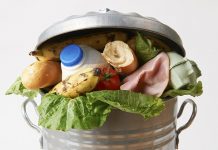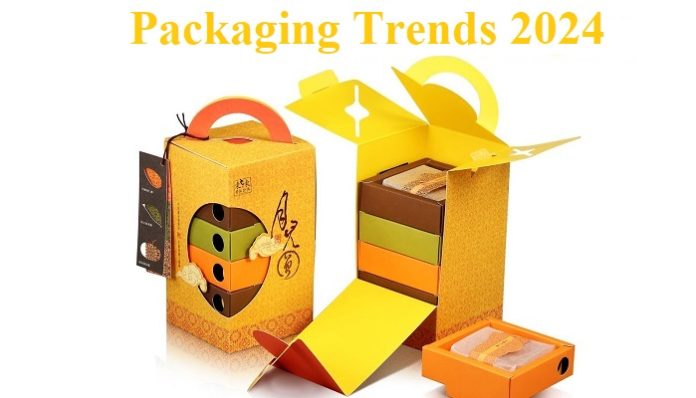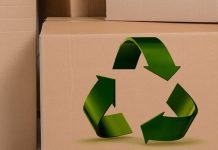It is well to be noted that in March 2022, a UN resolution went on to be adopted to create a worldwide legally binding instrument when it comes to plastic pollution, which includes the marine environment. The Intergovernmental Negotiating Committee- INC was set up due to this.
The third session, INC-3, went on to take place in Nairobi, Kenya, in November last year and witnessed steps towards attaining the goal set out; however, some work needs to be done. Reactions received mixed judgments. The Business Coalition for a Global Plastics Treaty has gone on to praise the majority of Member States due to their positive contribution, but the Ellen MacArthur Foundation remarks that limited formal progress happened to be made to give thrust to intersessional work or broaden on the zero-draft text.
The executive secretary of the Secretariat, Jyoti Mathur-Filipp, goes on to state that the narrowing down as well as finalizing of varied text options will go on to take place at the next sessions, INC-4 in April 2024 at Ottawa, Canada, and INC-5 in the Republic of Korea in November 2024. This will be followed by a diplomatic conference a year later, when members are anticipated to embrace the instrument and open it for signature.
Plastic pollution goes on to affect all. One needs a strong, ambitious, and only plastic treaty, but that happens to be just the first of many steps. Once the instrument goes on to be adopted, the next critical step will be to make sure of its timely and effective execution.
It feels like the progress at present is slow, and there happen to be multiple challenges ahead.
The rise of AI
2023 has gone on to witness a disruptive technology that is elevating across the board of sectors and particularly in the packaging sector: artificial intelligence. However, what possibilities does it have in the times to come?
This technology can go on to get applied as well as support numerous different factors throughout the sector, right from technological advancements, logistical as well as production benefits like optimizing operations when it comes to production lines, sorting elements in waste streams, to marketing campaigns, sustainability like measuring carbon emissions, robotics, recycling, connecting supply chains as well as boosting inspection performance, and much more.
The possibilities look endless for application when it comes to addressing major challenges one is looking to solve. It will indeed be critical for problem-solving as well as decision-making in elements where one seems to regularly fail, as humans like interacting with the environment and developing a sustainable future.
As per the research and market report Artificial Intelligence in Packaging: Thematic Research, AI is all set to leave its mark across all sectors. Incumbents in virtually all industries face disruption due to AI, and those that do not make AI a priority will risk extinction.
In the years to come, AI as a service will push uptake and democratize AI tech. The publisher anticipates that adoption will surge in the sector thanks to as-a-service offerings from big tech companies that democratize the usage of AI.
With the packaging sector putting ever more significance on data learning as well as transparency, AI has the drive to open eyes and provide support when it comes to streamlining and enhancing the current models beyond the capacities as humans.
Reusability
Due to the focus when it comes to reuse and refill at the heart of some of the biggest initiatives on packaging waste, whether it happens to be the Global Plastics Treaty, the edits to the European PPWR, or the Ellen MacArthur Foundation’s Plastics Pact, just to give just three examples, it looks feasible to hope that 2024 may finally go on to see the industry make at least some headway when it comes to the establishment of viable reuse schemes.
Recently, there have been many promising startups in the area, such as, but by no means limited to, some of the Sustainability Awards finalists, such as EcoCubly, which is an e-commerce platform, or Fyllar’s-mess-free refill solution. Prominent brands have also gone on to roll out their own pilots. So, Nestle, for example, has launched reuse pilots throughout 12 countries, and the Coca-Cola Company as well as PepsiCo have announced certain reuse targets. In 2025, one can even anticipate to hear some of the results.
It has also been suggested that one happens to be rethinking the approach to reuse: more agile as well as focused on localized areas. An example of how this may go on to look can be witnessed in a London-based clean-tech start-up named Again, which went on to fund a pilot scheme in London along with the Budweiser Brewing Group, Greene King, Diageo, Biffa, and Arsenal’s Emirates Stadium. The firm has been making use of new automation, robotics, as well as software technologies in order to build a decentralized network with automated micro cleaning facilities.
The concepts as well as the enabling technologies happen to be clearly there, but there is indeed a strong caveat: reuse and refill happen to be even now, in their infancy, and one is yet to witness any initiatives achieve success on a wider scale. Even the much talked-about schemes like TerraCycle’s Loop have gone on to struggle so as to gain real speed after numerous trials.
It is well to be noted that what is needed in the coming year and what has also been largely lacking to date happens to be the collaboration of global policymakers, manufacturers, supply chain members, as well as retailers, not to leave out a willingness on the consumers part to adapt their behaviour. Reuse cannot go on to become a major part of the packaging value chain if there is no coherent legislation, clear definitions for varied reuse models, and a willingness to speed up the uptake of promising new business as well as delivery models.
This being the case, it is indeed hard to anticipate with surety how much growth will be made when it comes to reuse in the coming year. But after numerous conversations with experts, policymakers, as well as stakeholders, one now at least has an idea of how to almost be there.
Packaging that’s based on Fibre
In 2023, the gamut of fibre-based packaging witnessed products like Releaf’s bags made that happen to be made from fallen leaves and Paboco’s paper bottle prototype getting developed. But the need for more recyclable barrier coatings went on to become clear.
August 2023 saw RyPax as well as CelluComp partner on a fibre-based bottle with a plant-based coating, notably the first all-fiber bottle solution with a biodegradable inner coating. Made out of pulp fiber from sources such as root vegetable waste, bamboo, as well as bagasse, it is most likely to benefit industries like food, beverage, beauty, as well as retail.
Craste, which goes on to create products right from crop residue, was a finalist in the 2023 Sustainability Awards with compostable millet straw packaging such as boxes and bags. The company goes on to claim that its technology can shift any kind of crop waste into tailor-made packaging.
What other applications when it comes to fibre-based packaging have been seen in 2023? In July, Ahlstrom, Adapa, as well as Maped worked together to in order to have in it transparent, fibre-based packaging papers into flowpacks when it comes to erasers, that are often used in school supplies. Cristal fibre-based paper from Ahlstrom was used, which happens to be renewable, biodegradable, as well as made from natural cellulose fibres.
In 2024, one may look forward to seeing further research and developments when it comes to creating an efficient life cycle in terms of fibre-based packaging, especially around recyclability at the end of life, and wider applications in areas that go beyond the spectrum of food, beverage, and retail.
Regulations for Packaging as well as Packaging Waste
Apparently, depending on who one asks, the Packaging and Packaging Waste Regulation, formerly a Directive, has either arrived on leaps and bounds or taken a step forward, but two steps back. After the initial draft went on to be leaked in late 2022, it has made a lot of growth in 2023 and pushed up months of discussion, which is both positive and negative.
At present, the European Parliament has gone on to vote and adopt the Regulation, with 426 votes voting in favor, 125 against, along with 74 abstentions. The Committee on Environment has gone on to introduce a Compromise Amendments series so as to fill gaps that are seen in the original draft, and both the European Parliament as well as the Council have gone on to establish their positions when it comes to trialogue negotiations coming up this month. It is well to be noted that the criticism of the legislative text is most likely to continue into 2024. When both positions have already gone on to be met with mixed reactions, it is to be seen if the final draft is going to be widely accepted.
Apparently, even the most recent amendments have raised concern for certain sector players, from UNESDA’s reservations about new reuse objectives failing to get in sync with the existing recycling efforts to EUBP going ahead and objecting to missing measures with regards to bioplastics.























